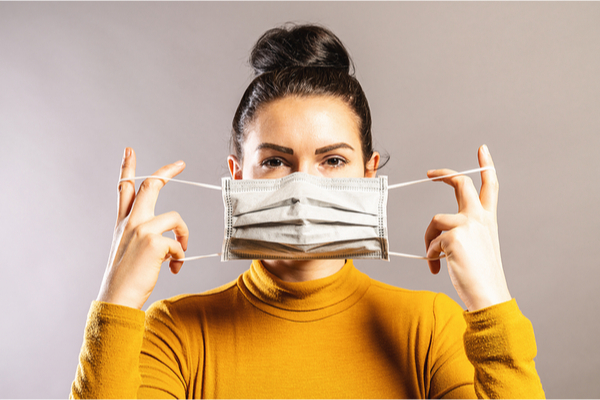Most Americans are safe going without a mask in indoor settings, including in schools, the Centers for Disease Control and Prevention said Friday. The highly anticipated change to the agency’s mask guidance leans less heavily on the number of Covid-19 cases as a key measure, instead giving more weight to hospitalizations and local hospital capacity.
The new guidance puts more than half of the nation’s counties at low or medium risk for Covid, meaning masks are no longer necessary there. Those counties account for roughly 70 percent of people in the country. It’s a dramatic shift from the previous guidance, which recommended masks in counties with substantial or high transmission, a category that covered the vast majority of the country. The recommendations apply to everyone, not just those who are vaccinated or have received a booster shot.
CDC Director Dr. Rochelle Walensky said at a briefing Friday that the change reflects that the overall risk of severe disease from Covid is lower because of widespread immunity provided by vaccines or prior infection, improvements in testing, and accessibility to new treatments. “We’re in a stronger place today as a nation with more tools to protect ourselves,” she said.
The agency noted that people who are at higher risk for Covid — or those who live with people who are at risk — may still want to take extra precautions, including wearing masks, regardless of their own community status. And those who still want to wear a mask can continue to do so. “People who wear a high-quality mask are well-protected, even if others around you are not masking,” Greta Massetti, a senior scientist at the agency, said at the briefing.
As NBC News reports, most states have already lifted or announced plans to lift their indoor mask mandates, but the CDC’s recommendation may persuade any remaining holdouts, who may have been unwilling to ease mitigation measures until the agency gave its stamp of approval. It may also encourage some states or districts that have been reluctant to end mask mandates in schools.
Although masks have been required in many school districts around the country, the CDC is including schools in the new guidance because children are at lower risk for severe illness, Massetti said. The agency only recommends universal mask use in schools in communities at the high risk level. Children can get infected and can get sick with Covid, but “they’re more likely to have asymptomatic or mild infections,” she said.
The reason for the CDC’s decision is largely due to the fact that Covid cases have fallen significantly in recent weeks, following record highs driven by the omicron variant. The United States is averaging about 75,000 cases per day, down 65 percent from two weeks prior, according to NBC News’ tally. The relaxed guidance is an appropriate move, said Dr. William Schaffner, an infectious disease expert at the Vanderbilt University Medical Center in Nashville, Tennessee. “Cases, hospitalizations and even deaths are trending downward and have been trending downward in a sustained fashion,” he said.
The guidance is a reasonable way to measure local risk, said Dr. Cameron Wolfe, an infectious disease expert and an associate professor of medicine at the Duke University School of Medicine. “If you’re sitting in a local county health department or a local hospital or school district and you want to try and use data in an informed way to drive your decision — not simply follow the political whim of your state — this gives you a really nice framework to think about that,” he said.
But experts also warn that a relaxation of the mask guidance now “doesn’t mean that this is the end,” said Bill Hanage, an associate professor of epidemiology at the Harvard T.H. Chan School of Public Health. “The virus is still going to be here. It is still going to pose a risk to people, and it’s probably going to get worse again in the fall and winter,” he said.
One unknown is whether a new variant will pop up, perhaps one even more transmissible than omicron or more virulent than delta. “We will have to remain alert globally to the possibility of a new variant occurring somewhere in the world coming here,” Schaffner said. “But I think we can move into a new normal.”
Walensky noted that the guidance could still change in the future. “We want to give people a break from things like mask wearing when levels are low, and then have the ability to reach for them again should things get worse in the future,” she said.
It’s also important to note that despite the CDC’s new recommendations, masks will still be required on interstate transportation systems, such as airplanes, buses and trains, and at airports, according to the Transportation Security Administration. That current mask mandate is scheduled to expire March 18, and may not be renewed, however, “the mask requirement remains in place and we will continue to assess the duration of the requirement in consultation with CDC,” a TSA official said.
What’s more, some places with particularly vulnerable people — hospitals and nursing homes, for example — may still require masks. “Masks are going to remain a thing,” Hanage said. “Some people are going to want to continue wearing masks because they are vulnerable, because they’re immunocompromised or because they live with somebody who’s immunocompromised.”
“We want to avoid the impression that masks are no longer useful anywhere.”
—
Photo Credit: r.classen / Shutterstock.com
